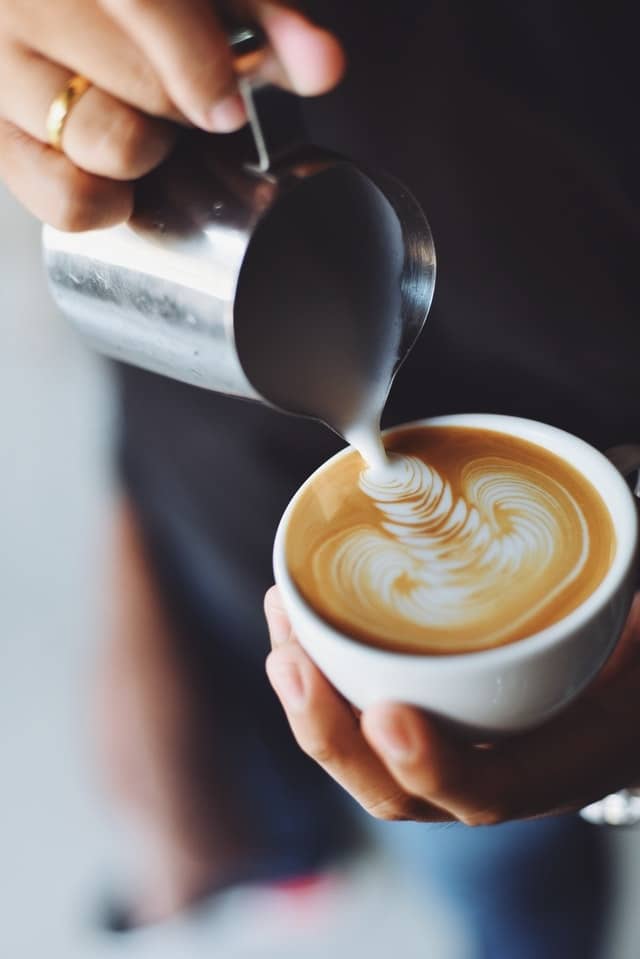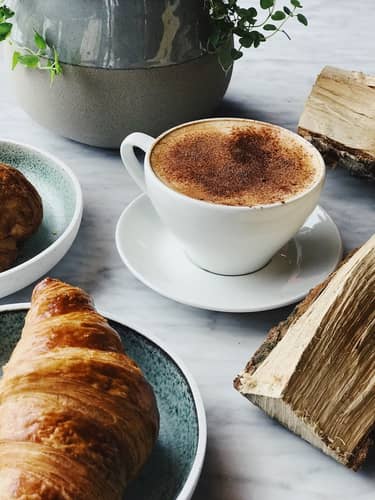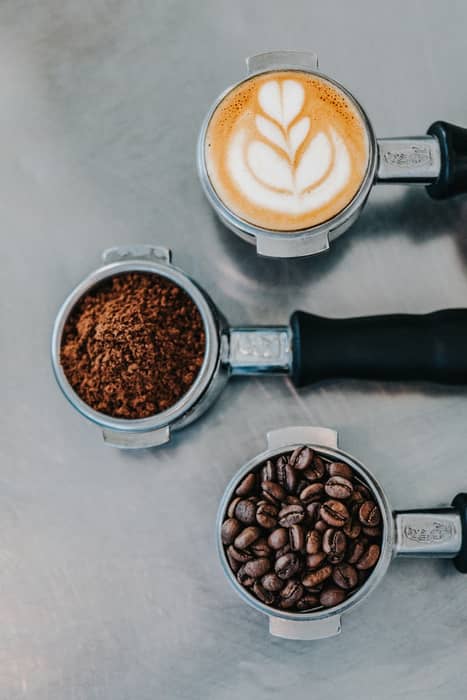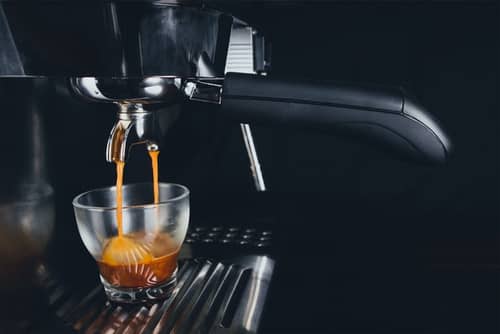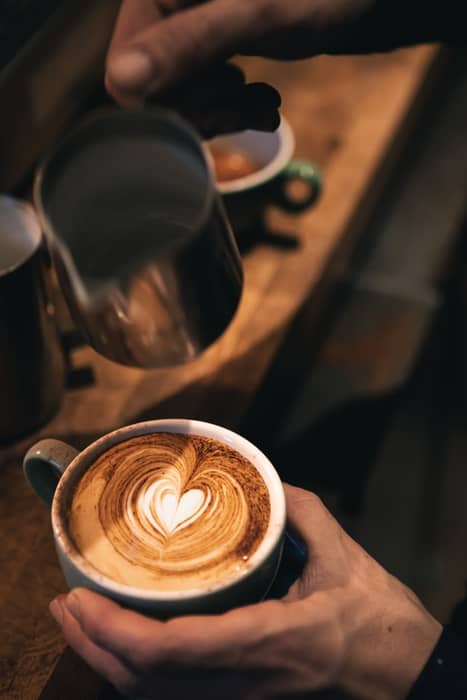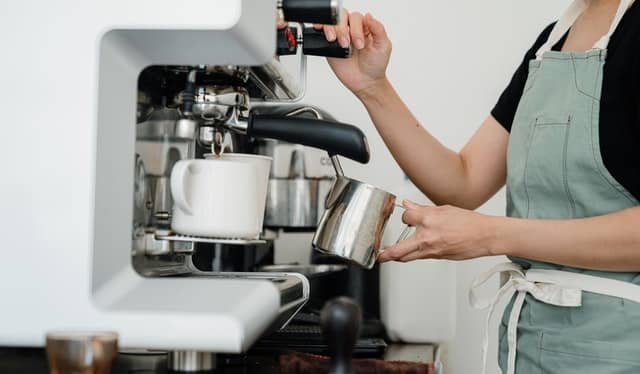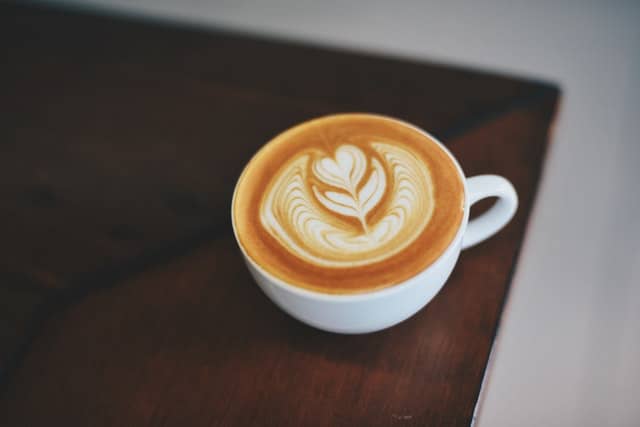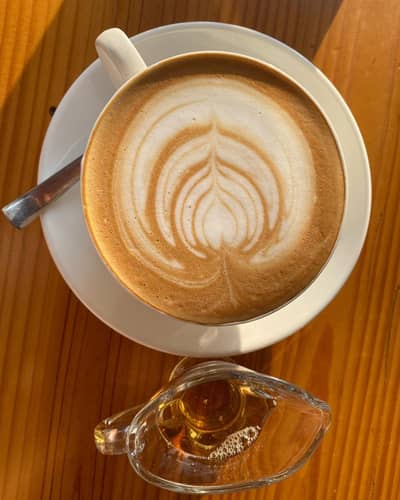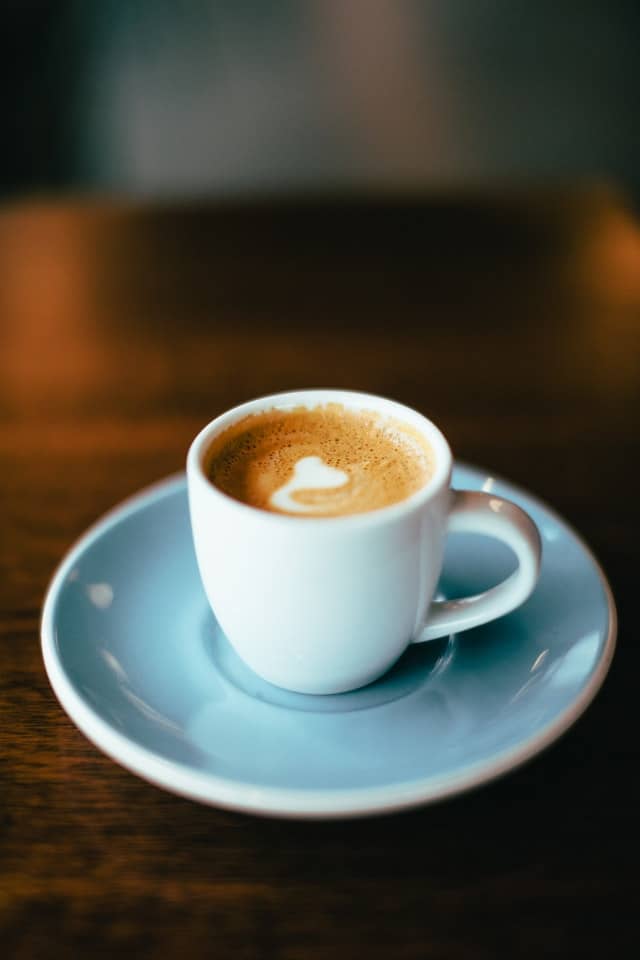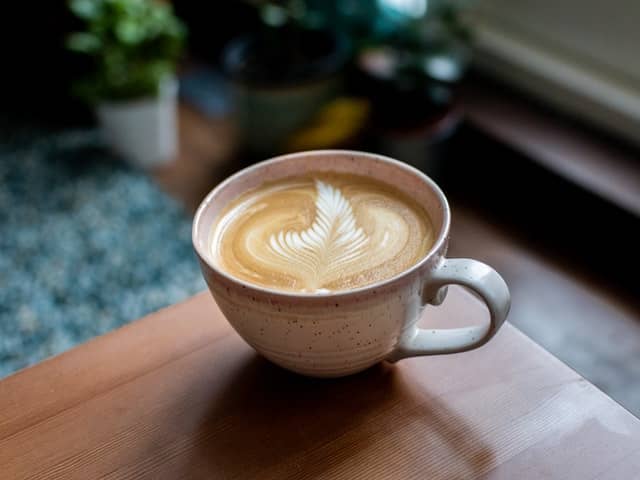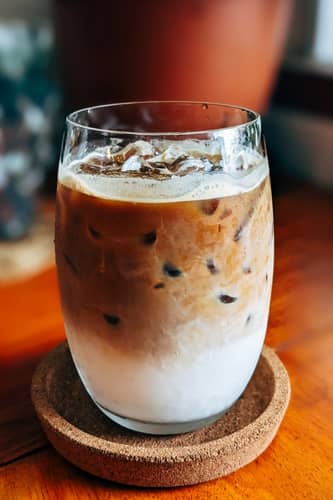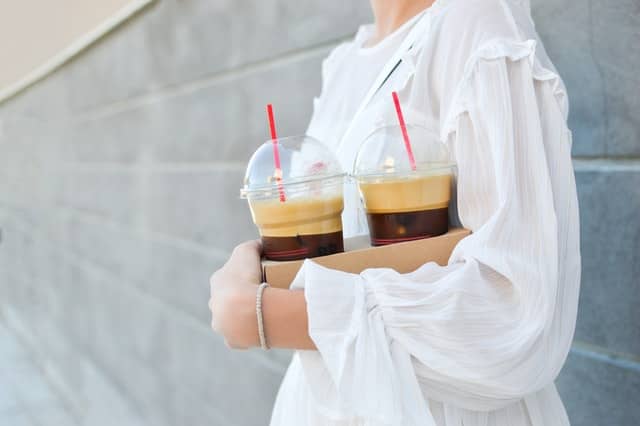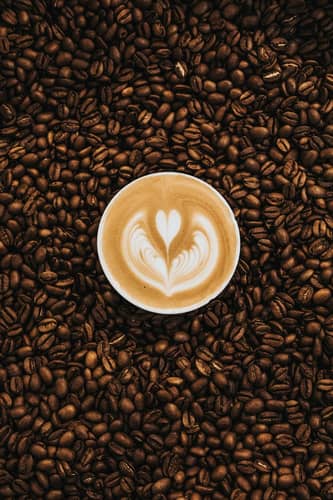When you walk into a coffee shop, the chances are that at least half the people will be drinking a cappuccino.
This delicious and foamy specialty coffee drink seems to be a firm favorite with coffee lovers.
But, what is a cappuccino?
Who invented it?
And, what makes it so different from other espresso drinks?
We love a good cappuccino, and, in this article, we’re here to tell you all about it.
- What is a Cappuccino?
- Of Capuchin Monks and Viennese Coffee Houses: A History of the Cappuccino
- The Development of the Modern Day Cappuccino
- How to Make a Cappuccino with Steamed Milk
- Tips to Ensure the Best Milk Foam for a Cappuccino
- What Makes a Good Cappuccino?
- Popular Cappuccino Flavors
- Cappuccino Variations
- Conclusion: What is a Cappuccino?
- FAQ
What is a Cappuccino?
A cappuccino is an espresso-based drink that originates from Italy.
It may seem an easy coffee to make; after all, it’s just espresso and milk topped with copious amounts of foam.
But, there’s quite a bit more going on behind the scenes!
This espresso drink consists of equal parts espresso, steamed milk, and foam, i.e., one-third of espresso, steamed milk, and one-third of milk foam.
Italian cappuccinos contain only 6oz of liquid, while American cappuccinos are typically 12oz.
Also, a dry cappuccino has more milk foam and a wet cappuccino has more hot milk than froth.
Of Capuchin Monks and Viennese Coffee Houses: A History of the Cappuccino
How did these espresso drinks become so popular? Well… it’s complicated!
The cappuccino has a long and storied history, with origins dating back to the mid-17th century.
José Ferraz de Almeida Júnior: Capuchin Monk.
The word cappuccino comes from the Italian word capuchin, for the Capuchin friars who wore dark-hooded robes very similar in color to coffee beans.
The original version was known as kapuziner in Austria and cappuccino in Italy because both countries had identical orders of Capuchin monks.
The original kapuziner, served in Vienna coffeehouses, contained coffee, milk, and sugar.
The Viennese topped it with spices, flavorings, and finally whipped cream.
That same drink is still served in Austria today. Known as a wiener mélange, meaning “Vienna blend,” it contains espresso, steamed milk (or cream), and milk foam.
The Development of the Modern Day Cappuccino
The Second World War brought with it a need for efficient technological solutions to many problems, including coffee brewing.
Improved technology meant pulling a delicious espresso became more reliable, so there was no need for additional sweeteners.
Slowly but surely, this espresso drink became popular worldwide. In the US, people warmed up to cappuccinos in the eighties.
Nowadays, these popular coffee drinks are a standard offering in any coffee establishment worldwide.
How to Make a Cappuccino with Steamed Milk
The first part of a cappuccino is an espresso shot (typically about 30ml). This equates to a double shot in most cafés.
The second part is the steamed milk, which should be in equal proportion to the espresso shot to get equal amounts of both in your cup.
The third part of a cappuccino is its famous milk foam—the layer on top that everyone loves!
Because there are so many ways to make this drink, there are also many different variations on ordering it at various cafes across the world.
To make a cappuccino at home, you’ll need the following:
Ingredients
- 18 g espresso beans
- 4 ounces of whole milk (or half-and-half/skim milk if you prefer)
- Optional toppings (cinnamon, ginger powder, chocolate syrup, cocoa powder)
Equipment
- Espresso machine with fitted a steam wand (or a separate hand-held frothing wand)
- Coffee grinder (preferably a conical burr grinder type due to its ability to produce a consistently fine grind)
- Metal steam pitcher
- Cappuccino cup
- Large spoon
- Small spoon (for stirring)
Steps
1. Finely grind 18 g (0.63 ounces) of your best espresso beans using the coffee grinder and place them into the espresso machine’s filter handle (aka portafilter).
2. Tap the filter handle lightly on the kitchen counter to settle the espresso grounds.
3. Pack the espresso grounds into the filter handle using a tamping rod and latch it onto the espresso machine.
4. Brew according to instructions and pour the brewed espresso into your cappuccino cup.
5. Measure out 4 fluid ounces of cold whole milk into the milk pitcher.
6. Place the steaming pitcher with milk under the espresso machine’s frothing wand, submerging it into the steaming pitcher. You should hear a loud “whistling” sound from the frothing rod.
7. Carefully pull the milk pitcher down until the frothing wand is approximately 1.5 inches below the milk surface and hold at this position for about 3 seconds. You should hear a “ripping” sound at this point.
8. Continue to lower the frothing wand into the steaming pitcher and continue aerating the milk until bubbles form on the milk’s surface. Eventually, you should have a creamy and voluminous layer of foam on top of your steamed milk.
9. Carefully pour the steamed milk from the pitcher on top of the double shot of espresso inside the cappuccino cup, being careful not to mix the two layers.
10. Using a large spoon, carefully place the milk foam onto the layer of steamed milk.
11. Add the topping of your choice, and enjoy!
Tips to Ensure the Best Milk Foam for a Cappuccino
You’ll want to steam the milk just right to ensure that you make the perfect cappuccino.
To do this, place the espresso machine’s steam wand (or hand-held frothing wand) inside the pitcher, slowly lowering it until the tip of the frothing wand is close to breaking the milk’s surface.
This will create most of your milk foam.
It’s essential that you create micro bubbles on the milk’s surface to make creamy, fluffy foam. If you need more foam, hold the tip of the frothing wand in this position for a couple of seconds longer.
Once you’ve created enough foam, lower the steam wand back to the bottom of the pitcher and allow it to heat the milk. Do this until the milk reaches the desired temperature.
While most people use whole milk for their cappuccino, skim milk produces better, more stable foam. The foaming properties of skim milk make it an excellent choice for making latte art or any milk-based drink that requires thick foam.
Frothed skim milk has a higher volume of tiny bubbles than its fattier counterparts, making it easier to create beautiful designs in your cappuccino or latte.
What Makes a Good Cappuccino?
A certified Italian cappuccino should have a pronounced espresso taste, low acidity, rich structure, and sweet foam.
Often, cafes serve cappuccinos with too much milk. If you can’t find any espresso notes in your cup, the ratio of coffee to milk is too much.
In addition, your cappuccino may taste burnt. This can happen for two reasons: either the barista steamed the milk at a high temperature and for too long, or the espresso shot took forever due to an incorrect grind.
Another thing to bear in mind is the ratio of the ingredients in these espresso drinks: The classic cappuccino ratio is 1/3 espresso to 1/3 steamed milk and 1/3 milk foam.
Any deviation from this ratio may mean you’re drinking something other than a cappuccino.
Popular Cappuccino Flavors
In most coffee shops today, you can order flavored cappuccinos. They are an excellent variation on your classic cappuccino.
For instance, at Starbucks, you can get cappuccinos in a wide range of flavors, including:
· Cinnamon Dolce
· Hazelnut
· Peppermint
· Raspberry
· Toffee Nut
Unlike the classic Italian 6oz cappuccino, these come in various sizes.
Cappuccino Variations
Cappuccino vs Caffè Latte
You might think that a cappuccino and a latte are the same, but that’s not quite the case.
Italian baristas created the latte by adding more steamed milk to this drink instead of frothed milk foam like a cappuccino.
A cappuccino will have a 1-to-1 ratio of liquid to foam. Like a cappuccino, a latte begins with the same base — a single espresso shot (or double).
The barista then pours several ounces of steamed milk into a tall glass to create a more subtle coffee than a cappuccino.
In contrast, a cappuccino contains one-third espresso, one-third heated milk, and one-third foam.
The foam is about 1/4 inch thick, and you can usually see the espresso through it.
Cappuccino vs Macchiato
In Italian, macchiato means “marked.”A macchiato is an espresso “marked with milk.”
When making this drink, baristas add one or two teaspoons of steamed foamed milk to the top of an espresso shot or a doppio.
The cappuccino macchiato and latte macchiato are larger versions of the macchiato.
Cappuccino vs Flat White
If you’re a coffee connoisseur, you’ve probably heard the term “flat white.” It is very similar in terms of flavor profile and size to the cappuccino.
However, a cappuccino has more foam than a flat white.
Iced Cappuccino
If you’re looking for a delicious treat that’s cool and refreshing, an iced version of a cappuccino is a perfect choice.
It’s made with espresso, milk, ice, and sweetener.
The origins of this drink are pretty simple: baristas add cold milk to your espresso shot, pour this into a cup with ice, and add just a thin layer of foam.
That’s it! It’s like an iced latte but with less milk.
Cappuccino Freddo
Cappuccino Freddos have been sipped for decades in coffee bars in Greece and the Med. It differs from the traditional cappuccino as it’s made from fresh espresso and cold froth milk.
This delicious combination highlights the flavors of a cold dark coffee with the robust flavor of a double espresso.
In Northern Italy, this drink isn’t as common. Coffee shops serve a gelato da bere instead, a mix of espresso and gelato.
Conclusion: What is a Cappuccino?
So now that you know what a cappuccino is, we hope you’ll order (or make) one for yourself.
This creamy, frothy drink is one of the most popular espresso drinks, delivering just the right caffeine hit and creamy, milky flavor.
Cappuccinos are latte’s cooler older brother—they’re cool, hip, more sophisticated than their younger sibling, and have something lattes don’t: foam!
If you haven’t tried it yet and are looking for an excuse to give it a go, we hope you will on your next coffee run.
FAQ
Which is stronger: a cappuccino or drip coffee?
A 12oz cup cappuccino with two shots of espresso contains approximately 160mg of caffeine. In contrast, a 12oz regular filter coffee contains approximately 300mg of caffeine. In essence, brewed coffee contains twice as much caffeine as a cappuccino.
What’s healthier–a cappuccino or latte?
Lattes are primarily milk beverages, containing more fat and calories than cappuccinos. If you want to make both drinks healthier, consider using skim milk or plant-based milk instead.
Does a cappuccino have more foamed milk than a latte?
A cappuccino has more foam and less milk than a latte. This is what gives this espresso drink its robust espresso flavor.
Can you make a cappuccino without a steam-wand espresso machine?
Yes. Many espresso machines have a steam wand, enabling the user to steam milk as they brew their espresso morning drink. However, there are hand-held frothing wands made from stainless plastic, steel, silver, or copper. These wands allow users to steam milk and foam separately for espresso-based drinks, such as cappuccinos, macchiatos, and lattes, and even hot chocolate.



